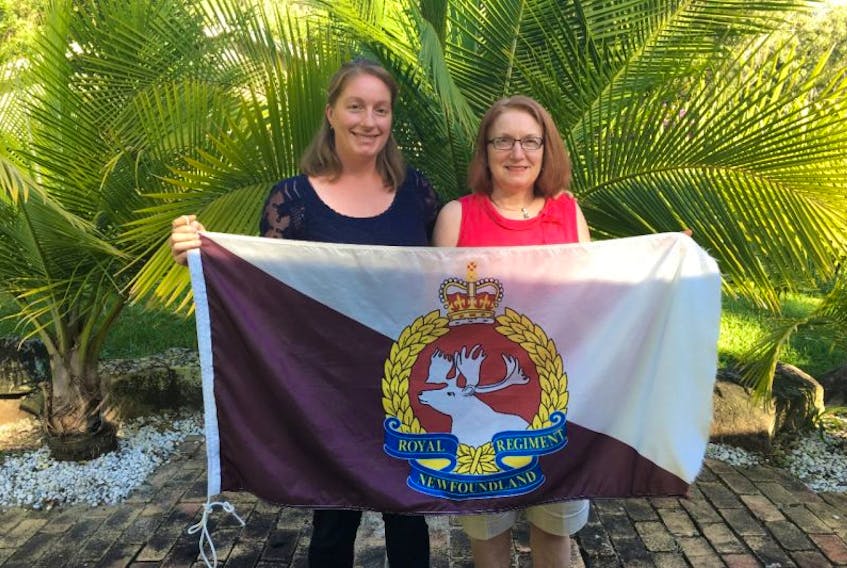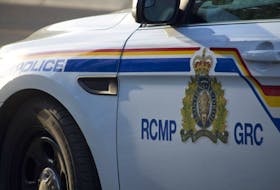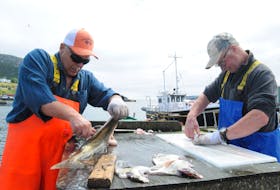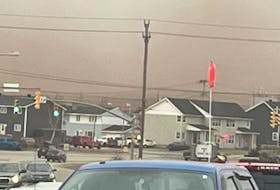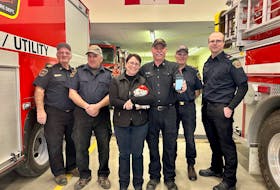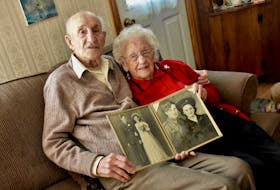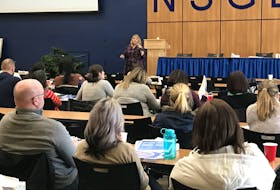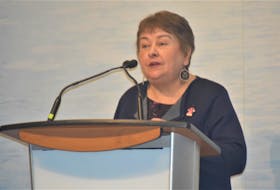5In the picture that Rowsell as a child called “antique,” Peddle is pictured in his Newfoundland Regiment uniform after he signed up to fight in the First World War.
Next to Peddle’s picture hung a framed certificate with the letterhead “Royal Newfoundland Regiment” and a photo of a different man.

Rowsell remembers asking her grandmother Theresa Byrne about Peddle and was told how he was her great, great, great uncle who served and fought in the Great War alongside so many other young Newfoundland men. The young Rowsell was fascinated.
“I also remember asking her who the man in the other photo was?” Roswell said recently.
“‘That’s King George V, the King of England’ she told me. And I pointed to the certificate with the fancy letterhead and I was told it was (Peddle’s) death certificate.”
According to information posted to The Royal Newfoundland website, Peddle enlisted in the Newfoundland Regiment on April 29, 1916. He was killed in action more than seven months later on Dec. 5, 1916.
On Tuesday, April 25 in Sydney, Australia — Rowsell has been living near there in Australia for the past 10 years — she and her mother, Kerri Rowsell, will honour Peddle and the Royal Newfoundland Regiment by marching in the ANZAC Day parade.
ANZAC (Australian and New Zealand Army Corps) Day marks the anniversary of the first major military action fought by Australian and New Zealand forces during the First World War. It has become a day of remembrance and national pride.
“My husband, Corey, who is from Sydney, had served in the Australian Defence Force for a number of years. He explained the history of ANZAC Day and its past and present importance in Australia,” Rowsell said. “The ANZACs landed at Suvla Bay, on Turkey’s Gallipoli Peninsula on April 25, 1915. This was the first major combat for the young nations and is generally regarded as a defining moment for both Australia and New Zealand.”
The Newfoundland Regiment fought at Gallipoli, too, with numerous stories of courage and the effects of terrible trench warfare conditions.
The regiment still marks April 25 in this province, both in honour of ANZAC Day and the fact that the regiment was first formed on April 25, 1795 as a regular unit of the British army.
Rowsell has been attending ANZAC parades every year in Australia and readily noticed that the Royal Newfoundland Regiment was never truly represented, although so many other allies were.
She decided it was time that changed. With her parents planning a trip to visit her in April she thought it would be a perfect time to honour Peddle and the regiment.
“In February I contacted Lindsay Russell, operations officer for The Returned and Services League of Australia, New South Wales Branch, to request permission for my mom to participate in the 2017 ANZAC Day march in Sydney,” she said.
“I thought there could be an opportunity for my mom to contribute by marching in memory of our uncle Richard Peddle of the Royal Newfoundland Regiment.”
Rowsell attended meetings, contacted officials and explained how Newfoundland had been a dominion at the time of the First World War, and was the only North American unit to serve at Gallipoli.
As the process continued, she was getting encouragement from a number of people involved in the process to keep pushing for it. At one meeting, after arriving late and fearing the meeting would soon end, she jumped to her feet and addressed the organizers directly.
“I explained the history of Newfoundland and how we also commemorate ANZAC Day. I shared how I was fascinated to learn that the Royal Newfoundland Regiment, and Newfoundland in general, appears to have never been involved in the ANZAC Day march previously,” she said. “I said my original request had been for my mom to march in memory of our uncle, but I was now requesting to have Newfoundland and the Royal Newfoundland Regiment included in the Order of March as a separate unit.”
The organizers were intrigued and wanted to know more. They asked her to stay behind to provide more information. By this time, too, Rowsell wanted to join her mother in the march.
“I realized being allowed to participate was more challenging than I expected,” she said. “It seemed that the official rules of the march allowed for descendants to participate, but officially there was only a place for descendants of Australian and New Zealand veterans.”
To her surprise, Rowsell was informed her request had been granted. She was told by Russell that her and her mother would have to carry a banner to show they represent the Royal Newfoundland Regiment. They would march with Group 61 – U.K. and Commonwealth Forces.
“I was elated. As far as we have been able to determine, this will be the first time ever Newfoundland has been officially recognized by participating in the ANZAC Day march, as an ally of the ANZACs,” she said.
Rowsell wrote to current members of the Royal Newfoundland Regiment and the Royal Newfoundland Regiment advisory committee to let them know what she was doing and to request a banner. She also got in contact with a woman at the Royal Newfoundland Regiment museum who was very helpful.
“Dad dropped by and picked up a couple of Regimental scarves and caribou pins that could be worn during the march,” Rowsell said. “And we were lucky enough to be able to obtain an old Royal Newfoundland Regiment flag, and this was the most significant of all. This would be our banner to be proudly marched through the streets of Sydney on ANZAC Day 2017.
“I was given the title of Unit Commander for the Newfoundland group, which I proudly — and with some amusement — accepted. I am far from a commander,” Rowsell laughed.
“I arranged for replicas of our uncle Richard Peddle’s medals to be worn by my Mom during the March, as is appropriate on ANZAC Day in Australia. His original medals are currently on display at The Rooms in St. John’s. This year his memory, and the memory of those Newfoundlanders who fought alongside the ANZACS, will be officially commemorated in the ANZAC Day March in Sydney, along with approximately 20,000 participants and 1000s of spectators, for the first time.”


